Tourists have been swarming to top attractions around the world in such large numbers it’s no surprise that ‘overtourism’ was shortlisted as, and almost became, the 2018 Word of the Year. The influx of tourists to destinations is weighing so heavily on local environments, infrastructure and residents that some countries have had to turn tourists away.
Locals of famous tourist destinations like Barcelona and Venice took to the streets in 2017 to protest the pressure on local infrastructure, damage to nature and threats to heritage in their hometown tourism was causing.
South Africa has over 10 million foreign visitors a year, and even more South Africans travel within the country. One in every 22 working South Africans were employed in the tourism industry in 2017. We rely on the tourism industry for work and play, but will it soon be too much of a good thing?
Cape Town and Durban are at low risk of overcrowding– for now, says a report by the World Travel and Tourism Council. Cape Town is at risk of having an overload on its infrastructure during the tourist season, whereas Durban’s infrastructure is at risk of being overloaded at specific attractions. Think electricity, water, roads and so on.
While we need to wait and see what happens, some dream destinations have already put up a defense line:
Amsterdam, Netherlands
There are more tourists who visit Amsterdam each year than there are residents who live there. Those who visit can be so disrespectful of the city and badly behaved that it launched the Enjoy and Respect campaign last year, which asks visitors not to litter, make too much noise in the street or urinate in public. The city says that freedom is important, but so is mutual respect.
Amsterdam has stopped the construction of new hotels in the bustling canal area and has hiked up tourist taxes. City officials have also managed to cut a deal with AirBnB to make sure that tourists can’t book accommodation in the city for more than 60 days at a time.
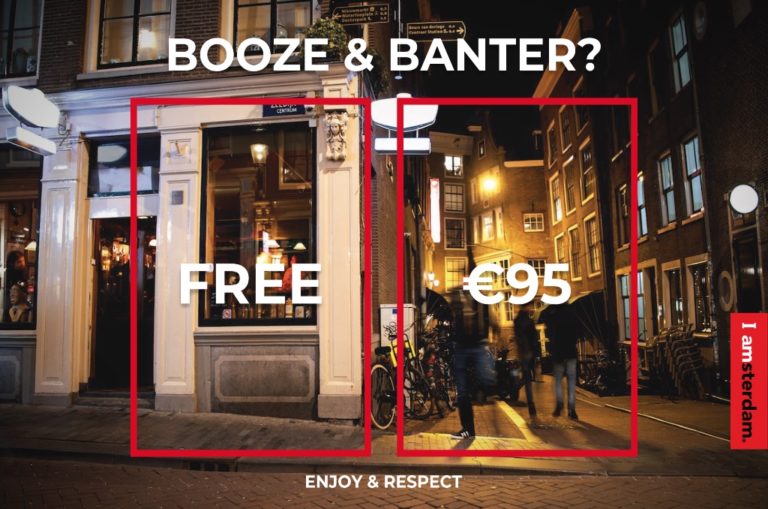
The city of Amsterdam launched a media campaign in 2018 to warn tourists of the costs of disrespecting the city. Photo: Supplied
Bali, Indonesia
Bali is still open for business but is using tourism tax to patch up the environmental and cultural damage that visitors cause. It has banned single-use plastic and is considering stopping tourists from being able to visit sacred Hindu temples without a guide, with the idea that this might stop tourists from climbing and sitting on temples or posing in bikinis at temples.

Tourists wear sarongs and waist belts as part of the dress code to enter the Pura Besakih Hindu Temple in Bali. Source: Sean Hamlin/Flickr
Dubrovnik, Croatia
‘Set-jetting’ has meant that this small coastal town has had to limit day visitors to just 4,000. The town is crowded with tour groups wanting to catch a selfie in ‘King’s Landing’, the filming location of the capital of the Seven Kingdoms in the Game of Thrones series.
The decision to place a throttle on the number of visitors to the island was made by the town’s mayor after UNESCO warned that the town could lose its World Heritage status if the tourists were allowed to run rampant through its 13th century churches, monastries and palaces.
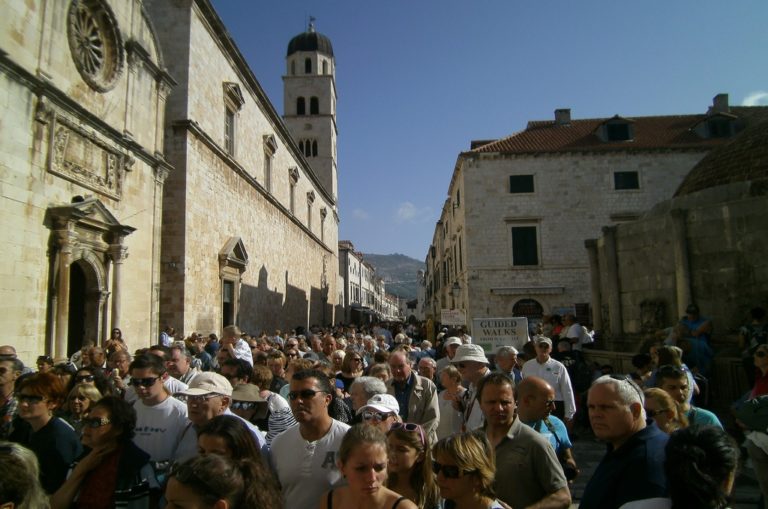
Tourists crowd the old city of Dubrovnik, Croatia. Photo: Flickr
Maya Bay, Thailand
Another ‘set-jetting’ destination is the beach made famous by the film starring Leonardo di Caprio, The Beach and the book by the same name. The coral reefs in the bay were damaged to such an extent by the 5,000 daily beachgoers that the beach has gone from temporarily closed to permanently shut. Locals hope that the rest time will allow some of the environmental damage to be undone.
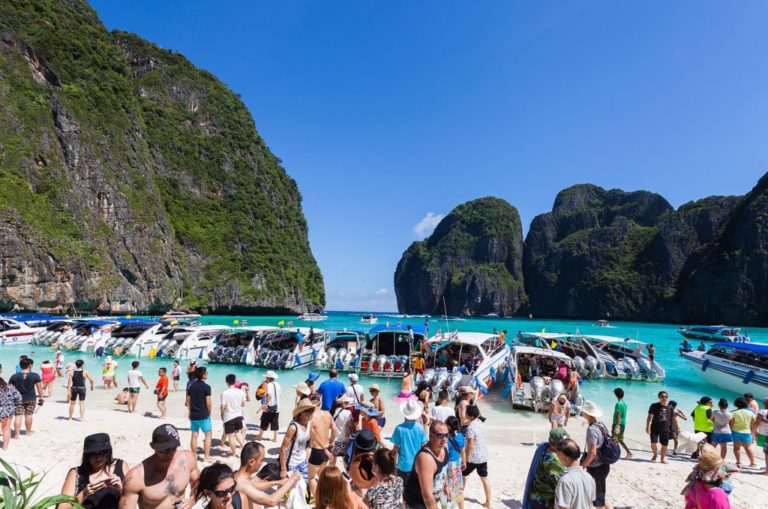
Maya Bay in Thailand has been closed because of crowds of tourists and boats which have damaged the coral in the bay. Photo: Diego Delso/Wikimedia Commons
Santorini Island, Greece
This iconic island once hosted 12,000 tourists a day. Now, only 8,000 are allowed to offload from the cruise ships which arrive in the port. Visitors place huge pressure on the island, which is home to just over 15,000 residents. The mayor has been quoted as saying that the small island has the problems of a city.
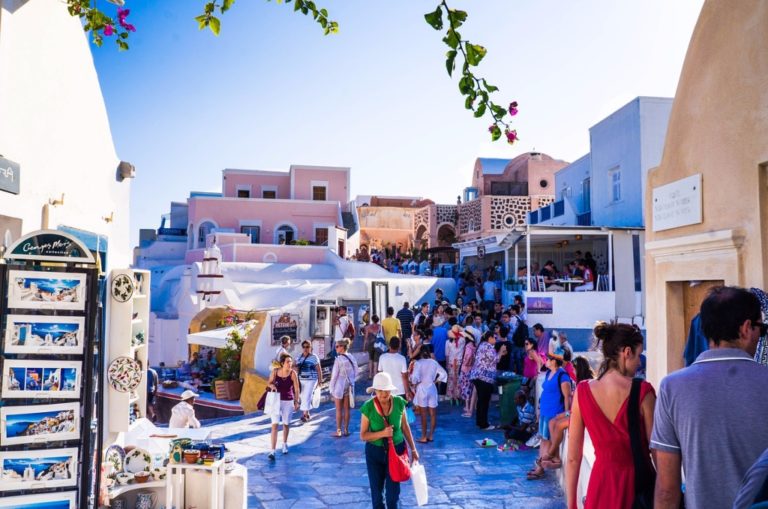
Santorini is popular with cruise ships. Last year over 400 passed through its port. Photo: Maria Michelle/Pixabay
Azore Archipelago, Portugal
The Azores foresaw the wave of tourists coming, so in 2015 it started putting a limit on the number of tourists allowed to visit the island. This number has been decreasing over the years as demand to visit the islands have shot up. Why? They want to keep the islands green sustainably and make sure those who live there year-round stay there to keep it as special as it is.
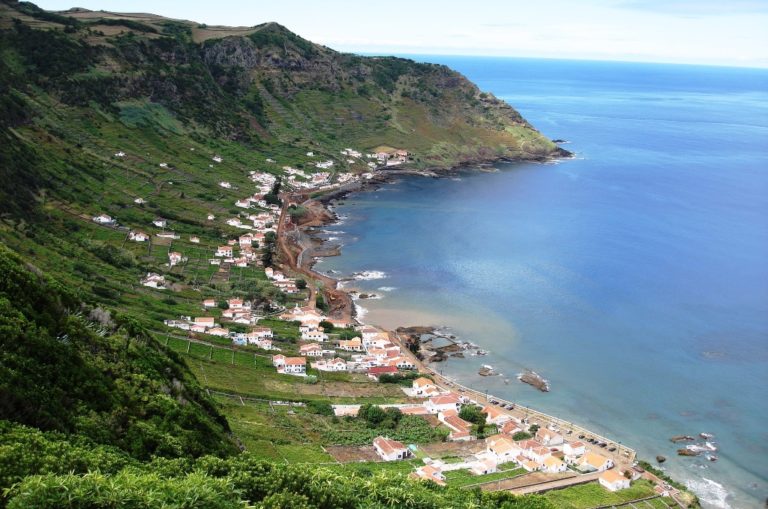
The islands which make up the Azores has just over 200,000 permanent residents. Photo: Pxhere
Venice, Italy
In 2017, Venice became ‘Disneyfied’ when it set up pedestrian gates to restrict tourist access to the city. The gates have come down, but a steep tourist tax has come up. The tax is meant to make sure this Heritage Site is looked after and residents have a decent quality of life. But, by 2020 you might have to book your visit to the city. Some say that by 2030, there may be zero residents living in Venice – all of them having been driven out by tourism.
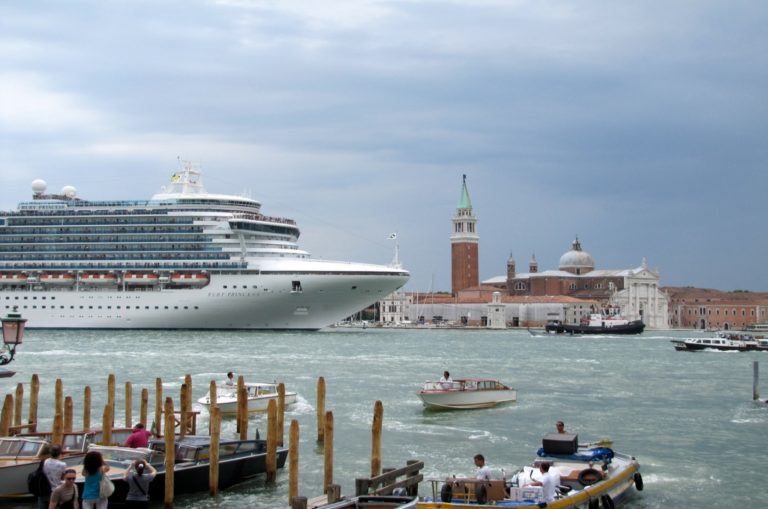
Cruise ships pass through the centre of the city, which residents say damage and pollute the city. Photo: Dan Davison/Flickr
Machu Picchu, Peru
This is another World Heritage Site overrun by people from around the world wanting to tick it off their bucket list. The ticketing system has been staggered to make sure tourists are spread evenly through the day. You need a ticket, a registered guide and an official bus trip to get into this once open site.
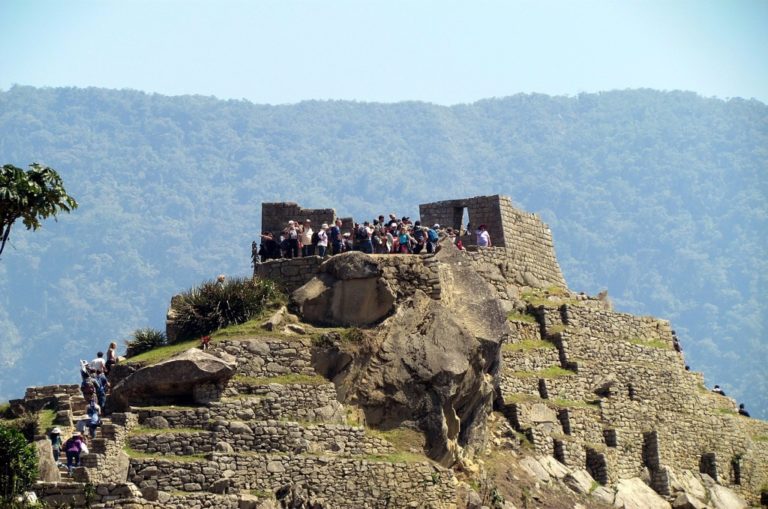
Tourists crowd together to get the best shot of the iconic Machu Picchu peak. Photo: Flickr.
You may also like
Related Posts
China’s National Health Commission has published a list of controversial coronavirus treatments that have animal...
read more
Warmer sea temperatures in the summer months, especially in February, were recorded and are believed...
read more
The latest report indexing the world's happiest countries has highlighted the important role of...
read more